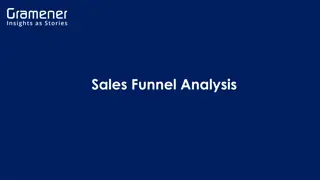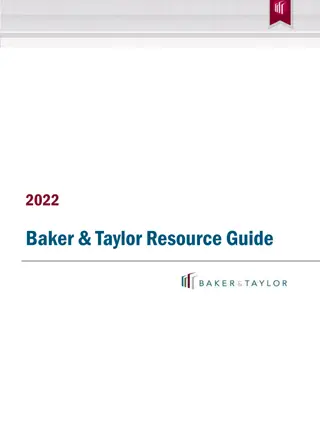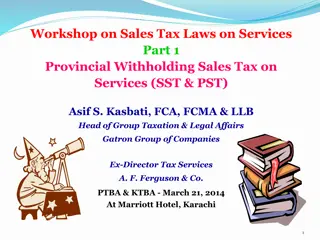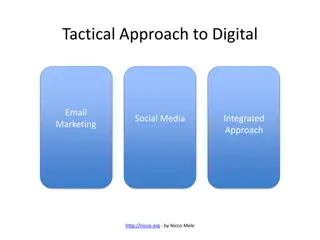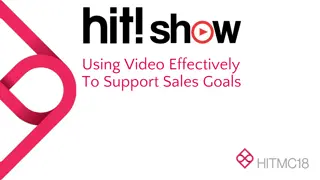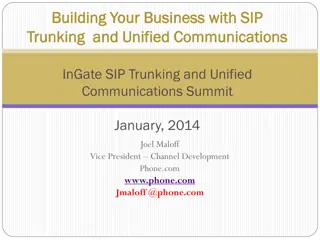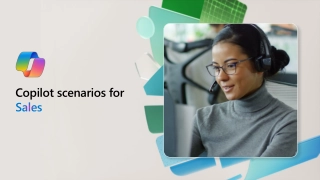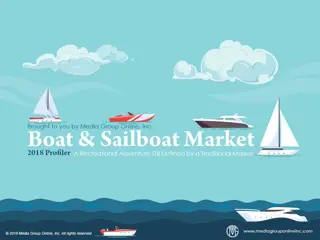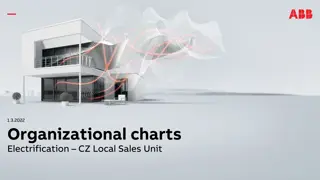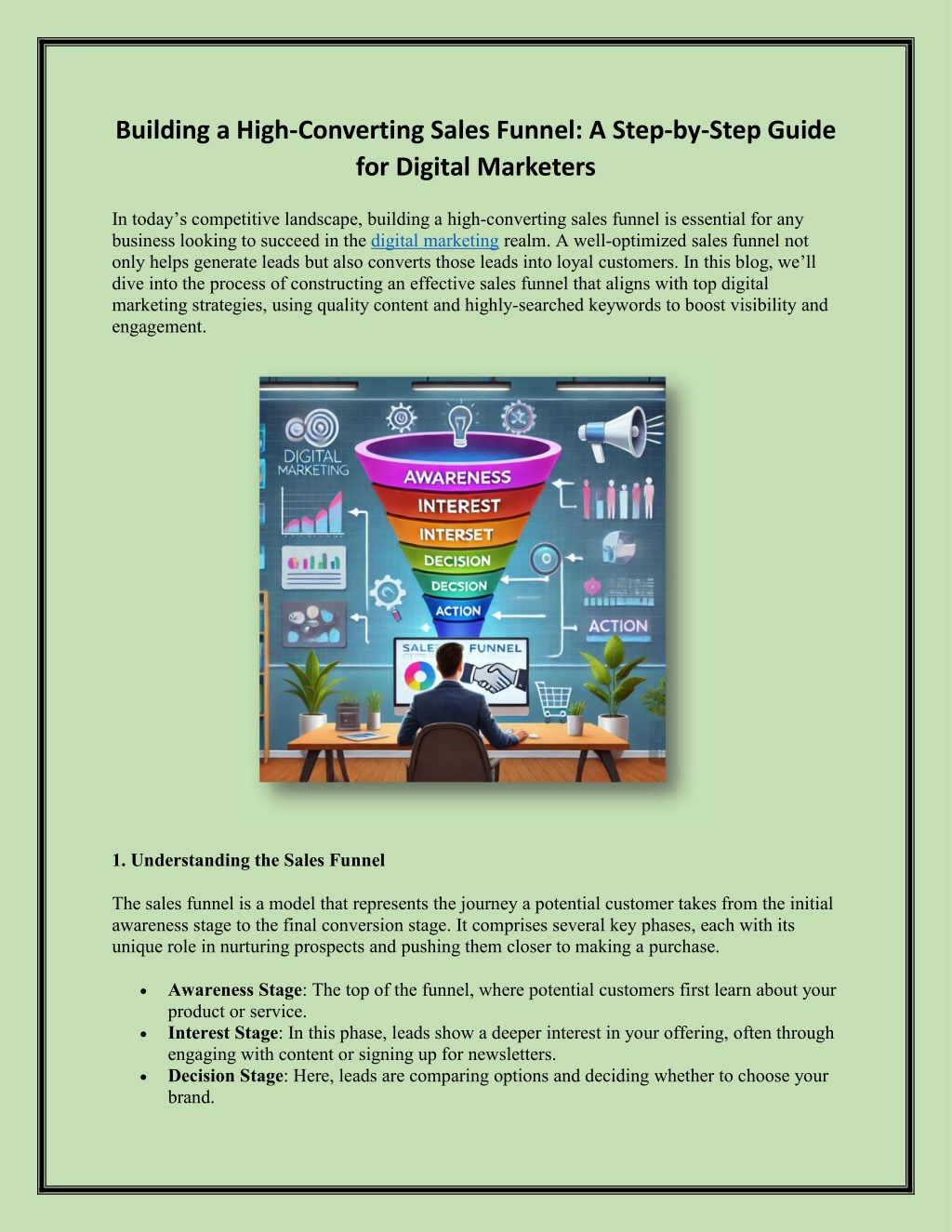
"Boost Your Sales Funnel Success: A Visual Guide to Conversion"
Navigate every stage of the sales funnel with this concise, visually compelling infographic. Learn how to engage prospects at each stageu2014Awareness, Interest, Decision, and Actionu2014to maximize conversion rates. Ideal for professionals aiming
Download Presentation

Please find below an Image/Link to download the presentation.
The content on the website is provided AS IS for your information and personal use only. It may not be sold, licensed, or shared on other websites without obtaining consent from the author. Download presentation by click this link. If you encounter any issues during the download, it is possible that the publisher has removed the file from their server.
E N D
Presentation Transcript
Building a High-Converting Sales Funnel: A Step-by-Step Guide for Digital Marketers In today s competitive landscape, building a high-converting sales funnel is essential for any business looking to succeed in the digital marketing realm. A well-optimized sales funnel not only helps generate leads but also converts those leads into loyal customers. In this blog, we ll dive into the process of constructing an effective sales funnel that aligns with top digital marketing strategies, using quality content and highly-searched keywords to boost visibility and engagement. 1. Understanding the Sales Funnel The sales funnel is a model that represents the journey a potential customer takes from the initial awareness stage to the final conversion stage. It comprises several key phases, each with its unique role in nurturing prospects and pushing them closer to making a purchase. Awareness Stage: The top of the funnel, where potential customers first learn about your product or service. Interest Stage: In this phase, leads show a deeper interest in your offering, often through engaging with content or signing up for newsletters. Decision Stage: Here, leads are comparing options and deciding whether to choose your brand.
Action Stage: This is where conversion happens. It could be a sale, subscription, or any 2. Step- by-Step Guide to Building Your Sales Funnel Step 1: Define Your Target Audience desired action. Each stage requires different tactics to maximize conversion rates, with a focus on providing relevant and value-driven content that addresses specific pain points. Before creating a sales funnel, it s crucial to know who you re targeting. A well-defined target audience helps you craft messages that resonate and attract the right people. Use digital marketing tools like Google Analytics and social media insights to gather demographic data and understand your audience's behaviors, preferences, and needs. Tip: Create customer personas to personalize content at each funnel stage, increasing relevance and engagement. Step 2: Generate Awareness with Top-Quality Content Quality content is one of the most powerful tools in digital marketing, especially in the awareness stage. At this phase, potential customers should encounter helpful, informative content that establishes your brand as a trusted authority. Blog posts, social media posts, infographics, and videos are excellent content types for drawing initial attention. SEO Optimization: Use high-ranking keywords related to your industry to improve search engine visibility. A blog post on a trending topic, for example, can drive organic traffic and place your brand in front of new prospects. Step 3: Capture Leads with Engaging Landing Pages Once you ve attracted visitors to your website, the next step is to capture their contact information. This is where optimized landing pages come in. A high-converting landing page should be visually appealing, have a clear call to action (CTA), and offer something of value, such as a free e-book, discount, or newsletter subscription. Best Practices: o Keep it Simple: Avoid clutter and focus on a single goal per page. o Offer Value: Provide something that encourages visitors to share their contact details. o Optimize for Mobile: With more users browsing on mobile, ensure your landing pages are mobile-friendly. Step 4: Nurture Leads through Email Marketing
Email marketing is an invaluable asset in the lead-nurturing phase of the funnel. After capturing leads, it s time to build a relationship with them through personalized and relevant emails. Segment your audience based on where they are in the funnel and customize content accordingly. Types of Nurturing Emails: o Welcome Series: A warm welcome email to introduce your brand. o Educational Content: Share how-to guides, tutorials, and industry insights. o Promotional Offers: Send exclusive discounts or free trials to encourage purchases. Step 5: Build Trust with Testimonials and Social Proof People trust the opinions of others, especially when making buying decisions. Incorporate customer reviews, case studies, and testimonials on your website, landing pages, and even in email campaigns. This builds credibility and reduces any hesitancy to take the next step. Quick Tips: o o o Display testimonials prominently. Use case studies that show tangible results. Integrate social proof, like user-generated content, on social media and landing pages. Step 6: Encourage Conversions with a Strong CTA
A call to action (CTA) is a crucial part of any sales funnel, driving visitors to take desired actions. A high-converting CTA is clear, concise, and visually appealing. Additionally, creating urgency by using words like limited time offer or exclusive deal can compel users to take action sooner. CTA Optimization: o Test different CTAs across pages. o Use action-oriented language. o Ensure CTAs are highly visible on all devices. 3. Using Digital Marketing Tactics to Boost Sales Funnel Performance A/B Testing to Optimize Results Experiment with different elements within your sales funnel to identify what drives conversions. For example, testing various headlines, CTAs, or visual layouts on landing pages can reveal what resonates best with your audience. Google Analytics and other A/B testing tools can provide insights into what changes improve performance. Utilizing Social Media Ads and Retargeting Social media platforms offer a treasure trove of tools for reaching targeted audiences at different funnel stages. Use Facebook Ads, Instagram Ads, and LinkedIn Ads to create brand awareness and bring visitors to your site. Retargeting ads are particularly effective for reminding users of your brand after they ve left your website without taking action, pulling them back into the funnel. Tip: Incorporate retargeting pixels to track visitors and show them customized ads that encourage a return to your site. Leverage Content Marketing to Drive Organic Traffic Blogging, video content, and downloadable resources are excellent ways to attract potential leads and improve your search engine ranking. The more valuable content you produce, the better you position your brand to appear in search results, ultimately feeding more people into your sales funnel. SEO Content Tips: o Use Google s most-searched keywords to improve visibility. o Publish regular blog posts on industry-related topics. o Include visuals like videos or infographics to boost engagement. Implementing Analytics and Tracking Data tracking is essential to understanding the effectiveness of your sales funnel. Monitor metrics such as click-through rates, bounce rates, and conversion rates to see which areas of the
funnel need improvement. Google Analytics, for example, can give you insights into traffic sources, user behavior, and conversion paths, allowing you to optimize each stage effectively. 4. Strategies to Improve Conversion Rates To make your funnel truly high-converting, use tactics that enhance user experience, address pain points, and remove any friction along the conversion path. Personalization: Tailor your messaging to specific audience segments, increasing relevance and improving engagement rates. Reduce Checkout Friction: Simplify the checkout process by minimizing form fields and offering multiple payment options. Address Objections Early: Anticipate and resolve potential objections through FAQs, testimonials, and transparent product information. 5. Conclusion: Maximizing Success with an Effective Sales Funnel Building a high-converting sales funnel requires a strategic approach and attention to every detail. By focusing on quality content, using digital marketing tactics, and leveraging Google s most searched keywords, businesses can attract, nurture, and convert leads into loyal customers. Remember, each stage of the funnel plays a unique role, so optimize every phase to guide potential customers seamlessly from awareness to action. The key to success lies in testing, analyzing, and refining your sales funnel based on data insights, ensuring it continuously evolves to meet the demands of your audience. A well-crafted sales funnel isn t just a pathway to conversion; it s a sustainable strategy for growth in the digital marketing world.




